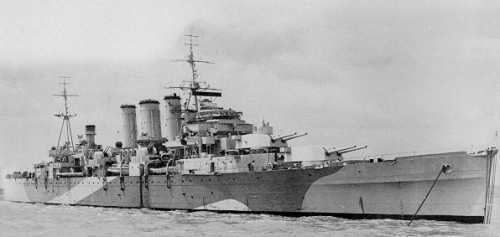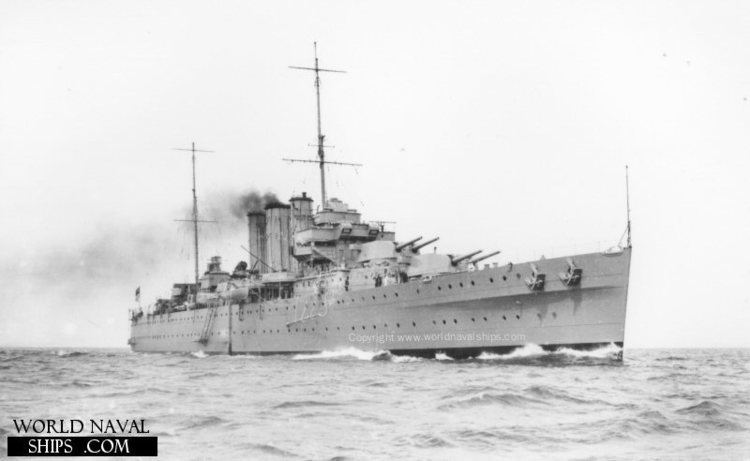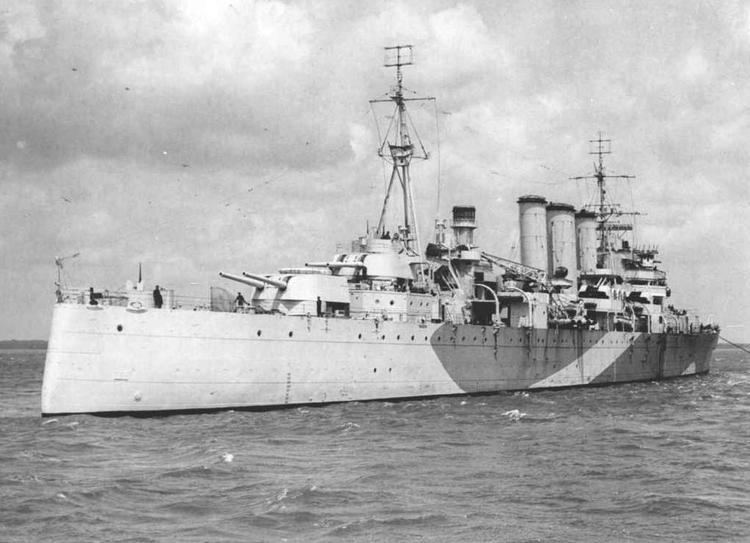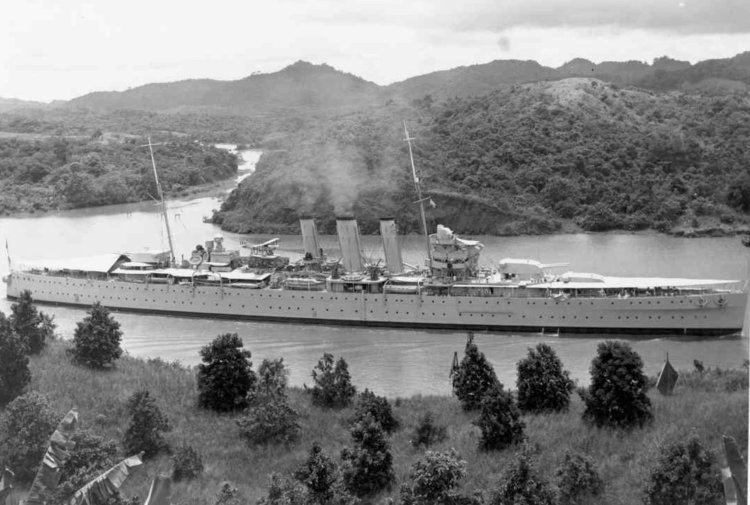Commissioned 30 April 1930 Construction started 8 July 1927 Length 193 m Beam 20 m | Laid down 8 July 1927 Launched 12 December 1928 Draft 5.5 m | |
 | ||
Honours andawards ATLANTIC 1941BISMARCK Action 1941NORTH AFRICA 1942ARCTIC 1943NORTH CAPE 1943NORWAY 1943 Fate Sold for scrapping on 3 January 1950 Builder Fairfield Shipbuilding and Engineering Company | ||
HMS Norfolk was a County-class heavy cruiser of the Royal Navy; along with her sister ship Dorsetshire, she was part of a planned four-ship subclass. She served throughout the Second World War.
Contents

Construction

She was laid down in July 1927 at Govan by Fairfield Shipbuilding & Engineering Co. Ltd and launched on 12 December 1928. She was commissioned on 30 April 1930.
Inter-war period

In September 1931, Norfolk was part of a mutiny that later became known as the Invergordon Mutiny. She later served with the Home Fleet until 1932 and then went to the America and West Indies Station between 1932 and 1934. From 1935-1939, she served on the East Indies Station before coming home to refit in 1939, being still in dockyard hands when war was declared.
Second World War

At the outbreak of war in 1939, Norfolk deployed with the 18th Cruiser Squadron of the Home Fleet, and was involved in the chase for the German small battleships Gneisenau and Scharnhorst, along with the pocket battleship Admiral Scheer. She was soon receiving numerous repairs for damage that she had received, not to mention vital modifications to the ship. Her first repairs were carried out in Belfast, after damage from a near-miss by a torpedo from U-47, the submarine responsible for sinking the battleship Royal Oak at Scapa Flow.

Shortly afterward, bomb damage that she had received from a heavy air raid by Kampfgeschwader 26 at Scapa Flow on 16 March 1940 forced her into yet another repair, this time on the Clyde. After these repairs had been completed, Norfolk proceeded to the Tyne Shipyard for a new addition to her equipment — a radar set.

In December 1940, Norfolk was ordered to the South Atlantic on trade protection duties, operating from Freetown as part of Force K and also tasked with the hunt for Admiral Scheer and, in January 1941, the German auxiliary cruiser Kormoran. In February, she escorted Atlantic troop convoys, but by May she had returned to Icelandic waters. Norfolk was the second ship to sight the German battleship Bismarck. She and her near sister—from the earlier County-class—Suffolk continued to trail the German battleship; the cruisers later joined the battleships Rodney and King George V as part of the force that finally sank Bismarck. From September onward, she was employed as an escort for the arduous Arctic Convoys. During this period, her sister Dorsetshire had been bombed and sunk by Japanese torpedo and dive bombers in the Pacific Theatre as part of the British Eastern Fleet's attempts to dodge Japanese advances on Ceylon. Norfolk was part of the cruiser covering force of Convoy JW 55B when it engaged Scharnhorst, on 26 December 1943. She scored three hits on the German ship, and received several 11-in shell hits (all passing through the thin-skinned ship without exploding) in return, before she withdrew; Scharnhorst was later caught and sunk by the battleship Duke of York and her escorting cruisers and destroyers.
She sustained damage (especially to X-turret and barbette) in that confrontation, and she was subsequently repaired/refitted (losing X-turret in favour of additional AA guns) on the Tyne, which prevented her from being involved in the historic D-day landings. Norfolk was the flagship of Vice Admiral Rhoderick McGrigor off North Norway during Operation Judgement, Kilbotn, an attack by the Fleet Air Arm on a U-boat base which destroyed two ships and the U-711 on 4 May 1945, in the last air-raid of the war in Europe. When the war came to a close, Norfolk left Plymouth for a much needed refit at Malta, after transporting the Norwegian Royal family back to Oslo after their five-year exile in London. This was followed by service in the East Indies as the flagship of the Commander-In-Chief East Indies Station.
Post-war
In 1949, Norfolk returned to Britain and was placed in Reserve. She was sold to BISCO for scrapping on 3 January 1950. On 14 February 1950, she proceeded to Newport, arriving on 19 February, to be broken up after a long and proud service of 22 years, in which she gained the Norfolk lineage the majority of her battle honours, including her last.
